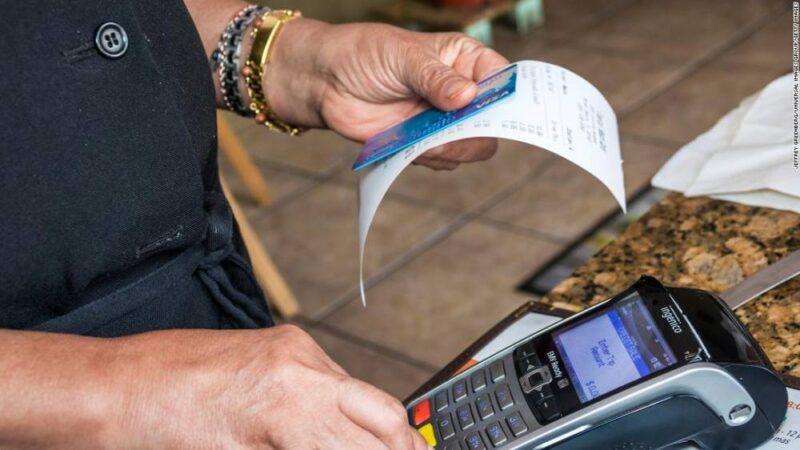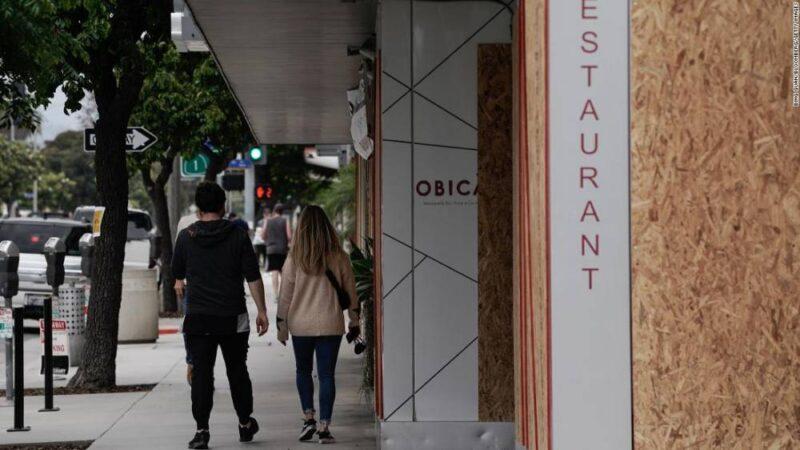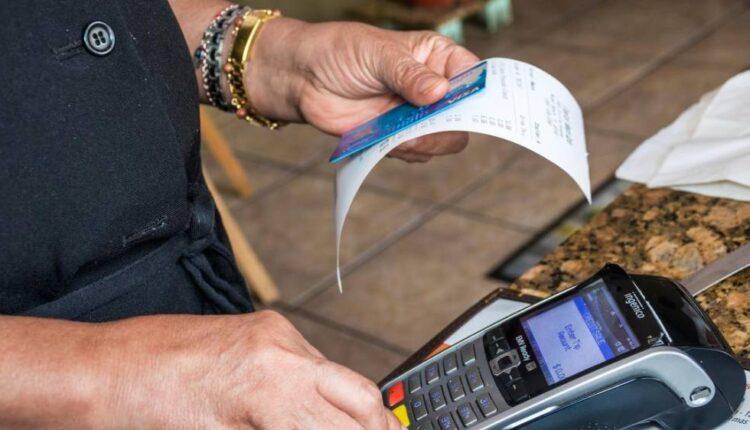New York (CNN Business)Margaret Keane has been in the credit card business for 40 years and she’s seeing something she never expected: There’s mass unemployment, yet Americans are paying their bills on time.
In normal times, that’d be good sign of financial responsibility. But in the pandemic era, it may just be the calm before the storm. Keane, the CEO of Synchrony Financial, the nation’s biggest store credit card company, told CNN Business Americans will have trouble staying current on their credit card bills once generous forbearance programs and the $600 boost to unemployment benefits fade away.
It'll almost certainly get darker from here."
“People got forbearance on credit cards, mortgages and auto loans. Everything got pushed out,” Keane said. “As forbearance and stimulus wears off, we’re definitely in a rockier place.”In other words, the financial pain got delayed, not canceled.Read More”It’ll almost certainly get darker from here,” Brian Wenzel, Synchrony’s chief financial officer, told CNN Business.Unless Congress takes action, this week will be the last for the $600 weekly enhanced unemployment benefit that was part of the $2 trillion stimulus package.Synchrony (SYF), which provides cards for businesses including Amazon (AMZN), Lowe’s (LOW) and TJ Maxx, has offered customers three months of forbearance and also waived late fees and interest charges. But that relief won’t last forever.
Bracing for bad loans
That’s why Synchrony, formerly part of the General Electric (GE) empire, is being “cautious” ahead of what could be a challenging next few quarters, Keane said.Synchrony, whose share price is down 37% this year, is reining in consumers’ ability to rack up credit card debt by lowering credit limits.

Americans are rapidly shrinking their credit card debt during the pandemicThe credit card company revealed Tuesday it raised its provision for bad loans by $475 million, or 40%, during the second quarter. The surging credit costs drove a staggering 94% drop in Synchrony’s bottom line. And yet Synchrony’s credit metrics hardly look like the United States is mired in a deep recession. (It is). Just 3.1% of the company’s loans are 30-plus days past due. That’s down from 4.4% a year ago. Excluding the impact of Synchrony losing the Walmart (WMT) portfolio last year, that rate was down nearly one percentage point. Likewise, Synchrony isn’t suffering a spike in losses on credit card defaults, at least not yet. Net charge-offs as a percentage of total average loans stood at 5.4%, down from 6% a year ago.
Americans are paying down credit card debt
But these numbers are a bit of a mirage. Synchrony’s forbearance program is masking the financial pain. Customers enrolled in the relief program don’t have a minimum to pay, meaning they are viewed as “current” whether they choose to make a payment or not. And nearly one-third of those customers have not paid off their credit card debt at all.

'I beg them': Still-unemployed workers plead for Congress to extend federal $600 benefitSynchrony has enrolled 1.7 million customers with $3.2 billion of balances in the forbearance program since it launched earlier this year. Encouragingly, the company said nearly 70% of those customers have since left forbearance. In another positive, Americans are taking this opportunity to chip away at their credit card debt. The amount of consumer revolving credit, which is mostly credit cards, has plunged by more than $100 billion since hitting a record high in February, according to the Federal Reserve. “Customers didn’t go out and spend. They actually paid down debt and deleveraged,” said Wenzel, the Synchrony CFO.
Job cuts loom
History shows credit card losses can be severe during recessions. That’s because this expensive form of debt is unsecured, meaning there is no collateral to protect lenders when consumers can’t pay. “We believe that this environment will prove challenging for Synchrony and expect weak earnings for 2020,” Kyle Sanders, analyst at Edward Jones, wrote in a note to clients Tuesday. Sanders predicted Synchrony may need to set aside additional funds for bad loans in the near future because of the “elevated uncertainty about the magnitude and duration of the disruption from COVID-19.”Like other companies, Synchrony is seriously considering job cuts as it stares into that uncertain future.”We’re looking at every nickel we spend. We might have to do layoffs. I’m trying to do everything possible to minimize the number of layoffs we have to do,” Keane said, adding that any potential cuts won’t be “massive.”

Big banks expose huge divide between Main Street and Wall StreetThe biggest wild card, of course, is what happens with the pandemic. A second wave in the fall could further wound the economy. “We should all be concerned that the virus is increasing,” Keane said, referring to the recent spike of infections in Sun Belt states. Already, Synchrony is seeing signs that the resurgence of the pandemic is hitting the real economy. After plunging by as much as 31% year-over-year in early April, purchases on Synchrony cards turned positive in late June. However, Synchrony said that spending during the first two weeks of July was down 2% from last year. “We’ve seen a little bit of pressure since the virus popped up,” Keane said.
Surviving the retail apocalypse
The pandemic has reinforced Synchrony’s recent efforts to diversify away from brick-and-mortar stores. Last year, Synchrony made a bet on the booming pet industry by acquiring insurance provider Pets Best. Last fall, it was selected to build a credit card for Venmo. And now Synchrony is teaming up with Verizon (VZ) on a rewards credit card that caters to wireless customers.Meanwhile, the pandemic has crushed the already-hurting retail industry. Stores are shutting at an unprecedented pace. JCPenney (JCP), one of Synchrony’s partners, joined several other retailers including J.Crew and Neiman Marcus in filing for bankruptcy.”You will probably see more bankruptcies,” Keane said. “The guys that are successful are just becoming stronger and more sophisticated.”
Yet the Synchrony CEO expressed cautious optimism about the industry, especially stores that innovate and enhance the shopping experience. “I don’t buy that brick-and-mortar completely goes away,” she said. “People like to shop.”
Source: edition.cnn.com

